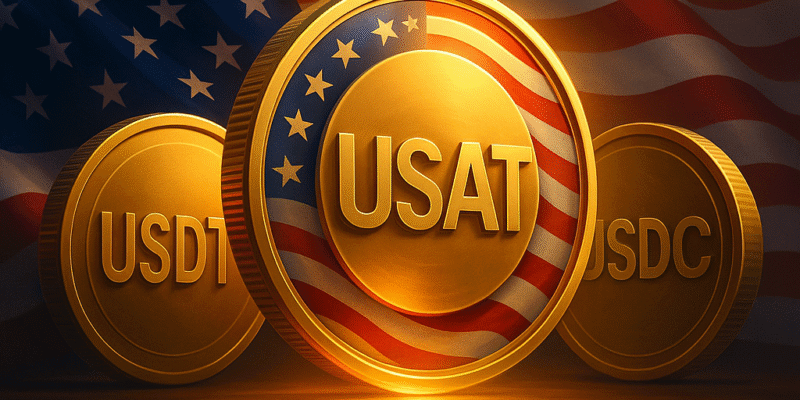For years, Tether’s USDT has dominated global stablecoin circulation, serving as a bridge between crypto markets and the dollar. It has been the backbone of trading pairs, remittances, and settlements across borders. Yet it has also faced scrutiny for how reserves are managed and where oversight truly lies. Now, Tether is moving to address these questions directly with the launch of the Tether USAT stablecoin, a dollar-backed asset designed to operate under U.S. regulation.
The announcement comes at a pivotal moment. Lawmakers recently advanced the GENIUS Act, which sets out strict requirements for reserve backing, reporting standards, and oversight of stablecoin issuers. By aligning USAT with this framework, Tether is signalling that it wants a place in the regulated future of digital money, not just the offshore markets where USDT has thrived.
At the centre of the rollout is Bo Hines, a former White House policy adviser now leading the U.S. operation. Issuance will run through Anchorage Digital Bank, with reserves managed by Cantor Fitzgerald. This structure is designed to reassure both regulators and businesses that the new coin is not only stable by design but also subject to the same kinds of safeguards expected of traditional financial institutions.
The Tether USAT stablecoin is intended to avoid some of the pitfalls that have dogged previous projects. Unlike certain algorithmic models that collapsed dramatically, USAT will be backed by liquid assets, with regular audits to verify holdings. Tether also emphasises that USAT will not launch with yield-bearing features. By stripping out promises of returns, the coin sidesteps regulatory debates about whether yield functions transform stablecoins into securities.
Competition in the U.S. market will be intense. Circle’s USDC already enjoys a reputation for transparency and regulatory friendliness, with strong adoption across fintechs and businesses. By entering this space, Tether is acknowledging that its next phase of growth depends not only on global liquidity but also on compliance in one of the world’s largest financial markets.
For businesses, the value proposition is straightforward. A regulated stablecoin means near-instant settlement, fewer intermediaries, and reduced costs in cross-border trade. It also opens doors for financial institutions that have been cautious about using stablecoins issued outside U.S. oversight. If trust is earned, the Tether USAT stablecoin could play a role in payroll, remittances, and digital commerce at scale.
Challenges remain. Tether’s history with reserve disclosures has left some investors sceptical, and it will need to prove that USAT is truly different. The partnership with Anchorage and Cantor Fitzgerald is meant to address that, but the proof will be in ongoing reporting and transparency. Observers will also watch closely how regulators interpret and enforce the GENIUS Act in practice.
Tether’s move signals the start of a new chapter. By anchoring itself in U.S. law with the Tether USAT stablecoin, it is attempting to evolve from a controversial market leader into a compliant, trusted player. If successful, the launch could reshape competition in the stablecoin sector and set the tone for how digital dollars operate in regulated environments.

Comments